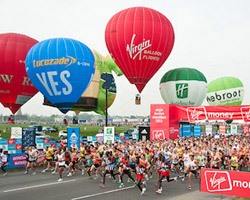The New York Institute of Photography is one of the world’s largest photography schools and because we are, we often publish fun and useful photography tips on our photography blog. Please enjoy!

As an amateur photographer looking to take the first step towards more professional compositions, one of the first things you’ll likely do is purchase a DSLR- which can be a pretty overwhelming investment if you have no idea how to use it. Getting started, here are a few simple tips to reference if you’re a beginner:
- Shutter Speed- Many DSLRs on the market only have three dials on them- one for the shutter, the ISO and the aperture. Getting started, these should be the first 3 you play with. All you really need to know about shutter speed as an absolute beginner is that it’s described in ratio, like 1/10th (slower) or 1/160th (faster). The slower the shutter speed, the more motion blur you’ll start to see in your shots. For a quick shutter speed cheat sheet, check out the link.
- Lighting- Before you learn to alter your camera’s settings, it’s important for you to understand that lighting is likely the reason to alter said settings in one way or another. If you are an NYIP student, circle back in your curriculum if you need a refresher- it is extensively covered in Unit 3 of your course.
- ISO- This setting is the one you’ll adjust most depending on the light you’re working with. The higher the ISO, the more light you’ll be capturing. However, most photographers steer clear of cranking the ISO too high in order to avoid what we call noise (a grainy look). For the most part, you don’t want to increase your ISO too much unless it’s dark out.
- Aperture- The aperture is what allows light to hit your camera’s sensor. It’s basically a small hole in your camera that you can open or close to increase your depth of field (how much of a scene you want in-focus). If you’ve ever heard of something called f-numbers, this is what that refers to. To let in more light, you’d have a small f-number like as f/2. The larger that f-number gets, the less light you let in.
Want to learn more? NYIP offers an online photography course that can help you improve your hobby or start a new career. Request your free course catalog today!






